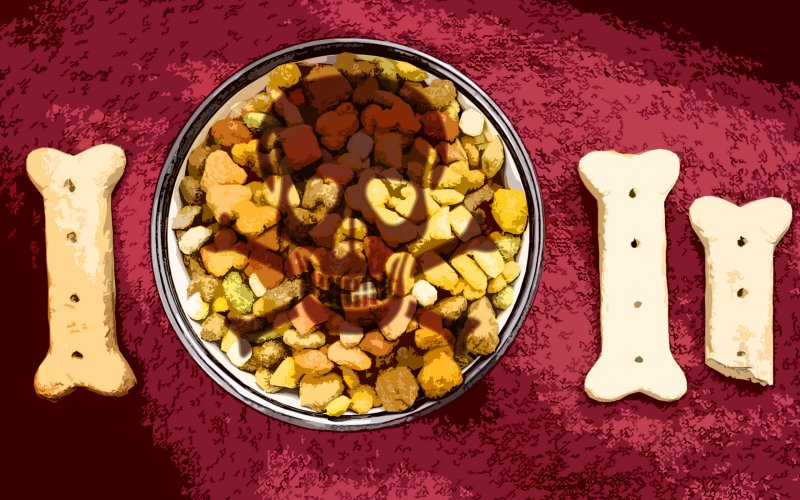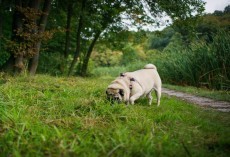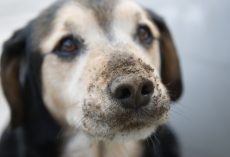Not only is the lawsuit allegations claiming that Purina has deadly ingredients in its food, but over two thousand people have come forward stating that their dog has died because of these ingredients. If only a few hundred came forward that might have been a different story, but two thousand!? You'll be in shock over what the findings are below:
A class action lawsuit alleges a mold byproduct used in kibble is leading pets to agonizing deaths.
Despite years of online allegations that one of the most popular dog food brands has been poisoning pets, it wasn’t until just weeks ago that the cat was let out of the bag in a court filing. A class action lawsuit was filed that blames the deaths of thousands of dogs on one of Purina’s most popular brands of chow.
Googling Nestle Purina Petcare’s Beneful brand will get you the pet food manufacturer’s website, a Facebook page with over a million likes, and, in stark contrast, a Consumer Affairs page with 708 one-star ratings supported with page after grim page detailing dogs suffering slow, agonizing deaths from mysterious causes.
Internal bleeding. Diarrhea. Seizures. Liver malfunction. It reads like something from a horror movie or a plague documentary, but a suit brought in California federal court by plaintiff Frank Lucido alleges that this is all too real—and too frequent to be a coincidence.
“All these dogs are eating Beneful,” explained Jeff Cereghino, one of the attorneys representing Lucido in the action.It doesn’t take much digging to uncover what appears to be a pattern of allegations, Cereghino said. Lots and lots of allegations. After hearing Lucido’s story, Cereghino checked it out for himself.
“We found a significant number of folks who were trying to draw exactly the same causal link. Thousands,” he said.
“But when I look at 4,000? Holy hell, there’s a lot of people out here.”
So Cereghino and his partners started talking to those people, comparing more and more of the stories of heartbreak.
“It’s horrible. That is something that you don’t want in dog food,” noted veterinarian and author Karen “Doc” Halligan when reached by phone. “It’s controversial. Why do you want to take a risk if there’s any kind of chance that that could be bad for them?”
But whether it’s good for dogs or not, food grade propylene glycol has been approved by the Food and Drug Administration. It also hasn’t been linked to toxicity, especially the type being alleged against Beneful.
Translated directly from the Greek words for “fungus poison,” mycotoxins are, essentially, a toxic byproduct of mold. When it comes to ducking discovery, they’re an especially crafty brand mold byproduct, and one found in all types of grains. In fact, a new study, released this month, indicates they’re even pretty common in breakfast cereal.
But there have not yet been any tests to determine if mycotoxins are in Beneful at all—or any other dog food, for that matter.
Cereghino said he’s determined to find that out.
He plans on running tests on the food both he and other members of the class action suit have saved to send over to a lab in the next few weeks.
That’s when they’ll know if those potentially dangerous chemicals are in the formula. And, if they are, they’ll still have to fight to prove that the mycotoxins are dangerous enough to make thousands of dogs sick.
As for Purina, when approached for comment, Keith Schopp, vice president of corporate public relations, read this statement to The Daily Beast:
“We believe the lawsuit is without merit and we intend to vigorously defend ourselves. Beneful is a high-quality nutritious food enjoyed by millions of dogs each year and there are no product quality issues with Beneful.
With a few different types of mold infecting this grain filled food, no wonder dogs are dying! I hope that the researchers are able to uncover more facts about the toxic ingredients that can prove that the food is harming dogs. Furthermore, it's unfortunate and tragic that so many pooches are dying. No dog deserves to suffer, no matter the cause!
To stay up to date on this lawsuit, and the truth behind the Purina food claims, visit The Daily Beast.











Sharon O'Regan
- Edit
Harringtons
Nadine Dickie
- Edit
Homemade food only
John Watson
- Edit
We look at the ingredients before we buy! Our pugs are worth more than cheap killer food.
Sherry Mika
- Edit
just a wait whle busta moove try kill 4x now so out …. nope !!!!!!!
Kendra Berta
- Edit
Steve Berta
Mary Kate Frank
- Edit
HELL, no!!
Lori Buono Musa
- Edit
No thank you!
I got a new puppy who is now a year old
He kept getting lethargic rumbling tummy throwing up..and I thought the last time he got so sick he would die..took him to the vet took him off beneful incredibites and started feeding him organic pet food and food I could recognize the ingredients and have not had one problem ..he’s happy full of life and not been sick once
Your food with toxic chemicals nearly killed my dog..so maybe you would like to compensate me for my dogs suffering !
Here’s the lethal garbage in your food !!!!!
The first ingredient this dog food is corn. Corn is an inexpensive cereal grain. And aside from its energy content, this grain is of only modest nutritional value to a dog.
not consider a preferred component in any dog food.
The second ingredient is chicken by-product meal, a dry rendered product of
slaughterhouse waste
It’s made from what’s
left of a slaughtered chicken after all the prime cuts have been removed.
In addition to organs (the nourishing part)
, this stuff can contain almost anything — feet,
beaks,
undeveloped eggs — anything
except feathers.
The third ingredient is corn gluten meal. Gluten is the rubbery residue remaining once corn has had most of its starchy carbohydrate washed out of it
The fourth ingredient is wheat flour, a highly-refined product of wheat milling. Like corn, wheat is an inexpensive cereal grain of only modest nutritional value to a dog.
The fifth ingredient is animal fat. Animal fat is a generic by-product of rendering, the same high-temperature process used to make meat meals.
Since there’s no mention of a specific animal, this item could come from almost anywhere: roadkill, spoiled supermarket meat, dead, diseased or dying cattle
EVEN EUTHANIZED PETS !!!!
The sixth ingredient is beef…raw beef contains about 80% water. After cooking, most of that moisture is lost, reducing the meat content to just a fraction of its original weight.
After processing, this item would probably account for a smaller part of the total content of the finished
product.
The seventh ingredient is rice flour. Rice flour is made from either white or brown rice and is considered a gluten-free substitute for wheat flour.
The eighth ingredient is soy flour, a high-protein by-product of soybean processing.
Although soy flour contains about 51% protein, this ingredient would be expected to have a lower biological value than meat.
And less costly plant-based products like
this can notably boost the total protein reported on the label — a factor that must be considered when judging the actual meat content of this dog food.
The ninth ingredient is meat and bone meal, a dry
rendered product from mammal tissues, including bone, exclusive of any added blood, hair, hoof, horn, hide trimmings, manure, stomach and rumen contents”.1
Meat and bone meal can have a lower digestibility than most other meat meals.
Scientists believe this decreased absorption may be due to the ingredient’s higher ash and lower essential amino acid content
What’s worse, this particular item is
ANONYMOUS
Since there’s no mention of a specific animal,
this ingredient could come from
almost anywhere:
spoiled supermarket meat,
roadkill,
dead, diseased or dying livestock
even euthanized farm animals.
this product contains
propylene glycol.
Propylene glycol
has been banned
by the FDA for use in making cat food.
Sugar
always an unwelcome addition to any dog food. Because of its high glycemic index, it can unfavorably impact the blood glucose level of any animal soon after it is eaten.
this food contains animal digest
Animal digest is a chemically hydrolyzed mixture of animal by-products that is typically sprayed onto the surface of a dry kibble to improve its taste.
artificial coloringThat’s because coloring is used to make the product more appealing to humans — not your dog.
do you really think your dog cares what color his kibble is?
garlic
garlic has been linked to Heinz body anemia in dogs
damage to the red blood cells of the animal.
no mention of probiotics, friendly bacteria applied to the surface of the kibble after processing to help with digestion.
the minerals listed here do not appear to be chelated.
And that can make them more difficult to absorb.
Non-chelated minerals are usually associated with….
lower quality dog foods.
this food contains menadione,
a form of vitamin K
linked to liver toxicity
allergies and the abnormal break-down of red blood cells.
Pamela Lazo
- Edit
Charles David
Cristi Carlson
- Edit
http://www.thepetitionsite.com/takeaction/731/664/229/?taf_id=30171179&cid=fb_na#bbfb=657184758